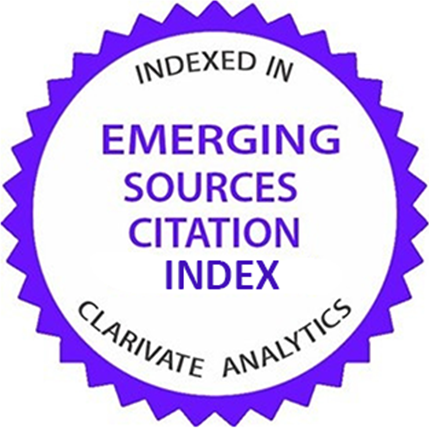Developing a model for predicting intra-abdominal injuries following blunt trauma; a cross-sectional study
Abstract
Objective: Finding the associated factors of traumatic intra-abdominal injuries (IAIs) and designing a predictive model could minimize the unnecessary use of computed tomography (CT) scans. This study aimed to develop a risk stratification model in this regard.
Methods: This prospective cross-sectional study was conducted at the emergency department (ED) of a level III trauma center. In this study, we thoroughly examined the association between demographic details, physical examinations, laboratory tests, and ultrasonography with abdominopelvic CT scan results regarding the presence of intra-abdominal injuries following blunt abdominal trauma, trying to develop a risk stratification model in this regard.
Result: A total of 472 blunt trauma patients with a mean age of 39.06±18.49 (range: 15-96) were investigated (81.1% male). 47 intraabdominal damages in 45 (9.5%) patients were diagnosed. Based on logistic regression analysis, presence of abdominal pain (odds ratio [OR]: 39.60; 95% CI: 9.42,166.35), positive focused assessment sonography in trauma (FAST results (OR: 46.93; 95% CI: 14079,148.89), and injury severity index (ISS)≥25 (OR: 6.43; 95% CI: 2.07,19.90) were significantly correlated with the presence of intraabdominal injuries in blunt trauma patients. The area under the ROC curve of the model was 0,865 (95% Cl: 0.805,0.926) with 86.67% sensitivity and 86.41% specificity.
Conclusion: Being accurate and user-friendly alongside broader criteria compared to similar studies makes our risk stratification model a reliable decision-making tool to optimize CT scan usage in the emergency department.
2. Isenhour JL, Marx J. Advances in abdominal trauma. Emerg Med Clin North Am. 2007;25(3):713-33, ix.
3. Bolandparvaz S, Yadollahi M, Abbasi HR, Anvar M. Injury patterns among various age and gender groups of trauma patients in southern Iran: a cross-sectional study. Medicine (Baltimore). 2017;96(41):e7812.
4. Wongweerakit O, Akaraborworn O, Sangthong B, Thongkhao K. Age as the impact on mortality rate in trauma patients. Crit Care Res Pract. 2022;2022:2860888.
5. Nishijima DK, Simel DL, Wisner DH, Holmes JF. Does this adult patient have a blunt intra-abdominal injury? Jama. 2012;307(14):1517-27.
6. Ferrera PC, Verdile VP, Bartfield JM, Snyder HS, Salluzzo RF. Injuries distracting from intraabdominal injuries after blunt trauma. Am J Emerg Med. 1998;16(2):145-9.
7. Michalke JA. An overview of emergency ultrasound in the United States. World J Emerg Med. 2012;3(2):85-90.
8. F. Charles Brunicardi DKA, Timothy R. Billiar, David L. Dunn, John G. Hunter, Lillian S. Kao, et al. Schwartz’s Principles of Surgery. Eleventh edition ed. New York: McGraw-Hill; 2019. 204 p.
9. Ron M. Walls RSH, Marianne Gausche-Hill, Katherine Bakes, Amy H. Kaji, Jill Marjorie Baren, et al. Rosen Emergency Medicine Concepts and Clinical Practice. Ninth ed. Philadelphia: Elsevier; 2018. 411 p.
10. Berrington de González A, Mahesh M, Kim KP, Bhargavan M, Lewis R, Mettler F, et al. Projected cancer risks from computed tomographic scans performed in the United States in 2007. Arch Intern Med. 2009;169(22):2071-7.
11. Smith-Bindman R, Lipson J, Marcus R, Kim KP, Mahesh M, Gould R, et al. Radiation dose associated with common computed tomography examinations and the associated lifetime attributable risk of cancer. Arch Intern Med. 2009;169(22):2078-86.
12. Jacobs DG, Sarafin JL, Marx JA. Abdominal CT scanning for trauma: how low can we go? Injury. 2000;31(5):337-43.
13. Richards JR, Derlet RW. Computed tomography and blunt abdominal injury: patient selection based on examination, hematocrit, and haematuria. Injury. 1997;28(3):181-5.
14. Salim A, Sangthong B, Martin M, Brown C, Plurad D, Demetriades D. Whole body imaging in blunt multisystem trauma patients without obvious signs of injury: results of a prospective study. Arch Surg. 2006;141(5):468-73; discussion 73-5.
15. World medical association declaration of Helsinki: ethical principles for medical research involving human subjects. Jama. 2013;310(20):2191-4.
16. Riley RD, Snell KI, Ensor J, Burke DL, Harrell FE, Jr., Moons KG, et al. Minimum sample size for developing a multivariable prediction model: PART II - binary and time-to-event outcomes. Stat Med. 2019;38(7):1276-96.
17. Shojaee M, Faridaalaee G, Yousefifard M, Yaseri M, Arhami Dolatabadi A, Sabzghabaei A, et al. New scoring system for intra-abdominal injury diagnosis after blunt trauma. Chin J Traumatol. 2014;17(1):19-24.
18. Deunk J, Brink M, Dekker HM, Kool DR, Blickman JG, van Vugt AB, et al. Predictors for the selection of patients for abdominal CT after blunt trauma: a proposal for a diagnostic algorithm. Ann Surg. 2010;251(3):512-20.
19. Holmes JF, Wisner DH, McGahan JP, Mower WR, Kuppermann N. Clinical prediction rules for identifying adults at very low risk for intra-abdominal injuries after blunt trauma. Ann Emerg Med. 2009;54(4):575-84..
20. Sharples A, Brohi K. Can clinical prediction tools predict the need for computed tomography in blunt abdominal? A systematic review. Injury. 2016;47(8):1811-8.
| Files | ||
| Issue | Vol 9 No 2 (2025): Spring (April) | |
| Section | Original article | |
| DOI | 10.18502/fem.v9i2.19192 | |
| Keywords | ||
| Abdominal Injuries Blunt Injuries Clinical Decision Rule Injury Severity Score Tomography X-ray Computed | ||
| Rights and permissions | |

|
This work is licensed under a Creative Commons Attribution-NonCommercial 4.0 International License. |










